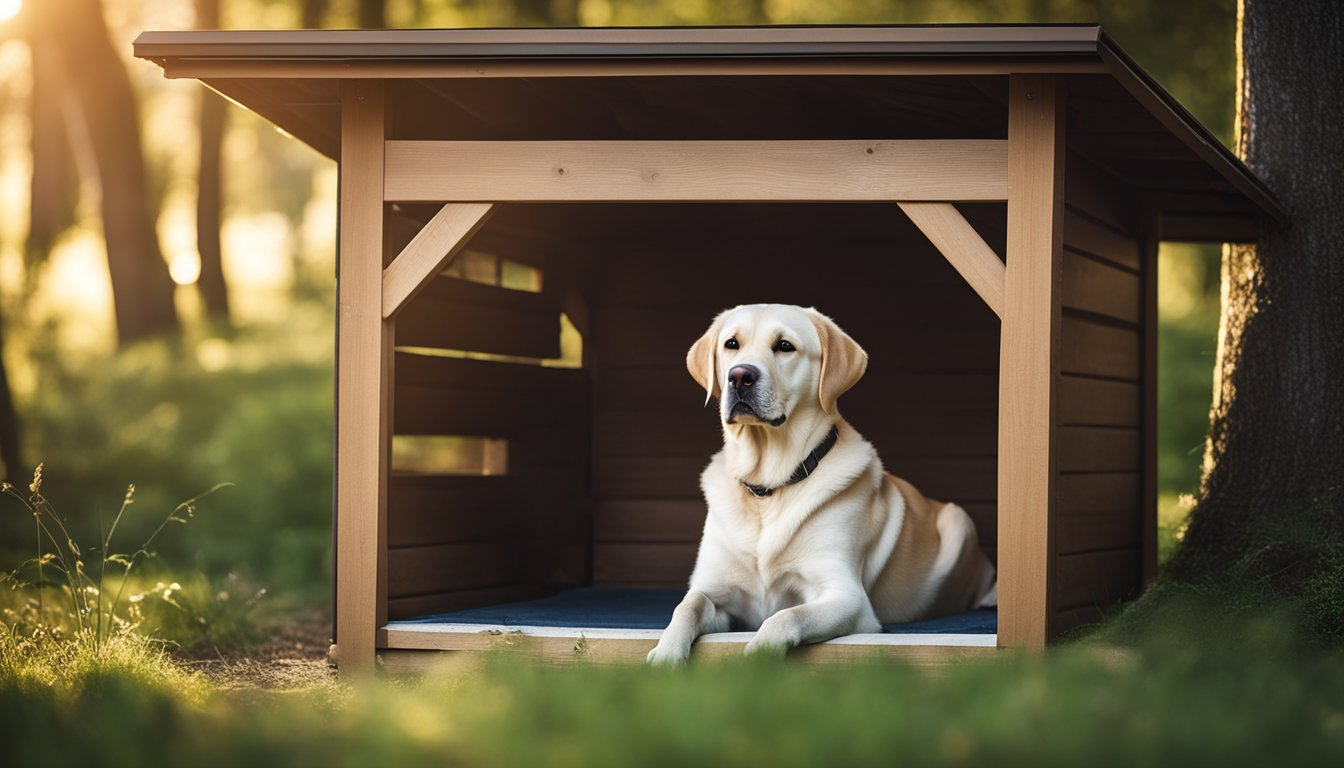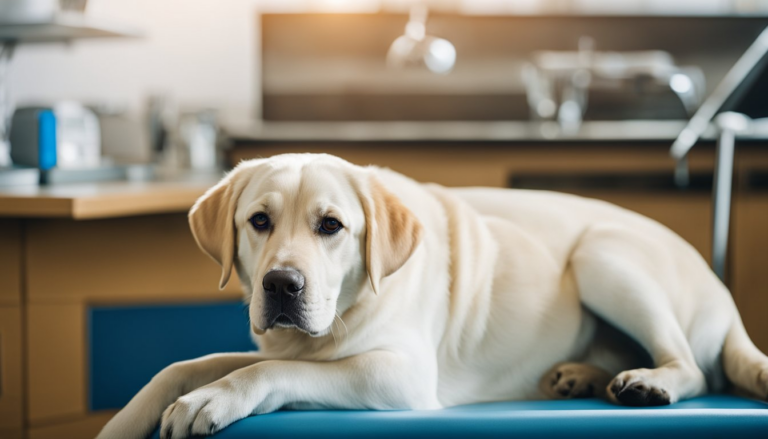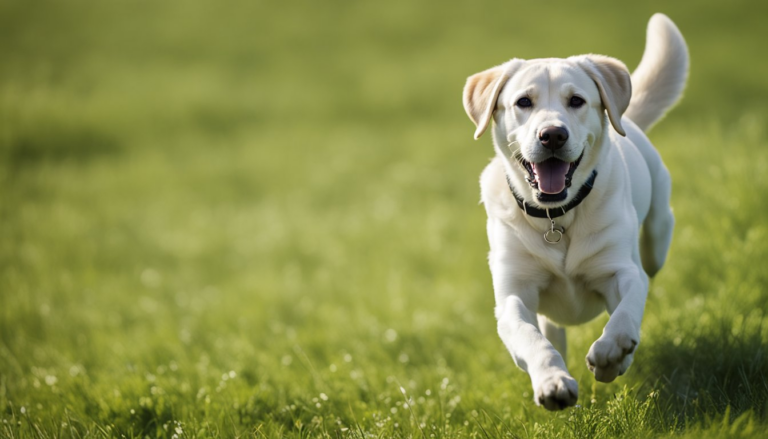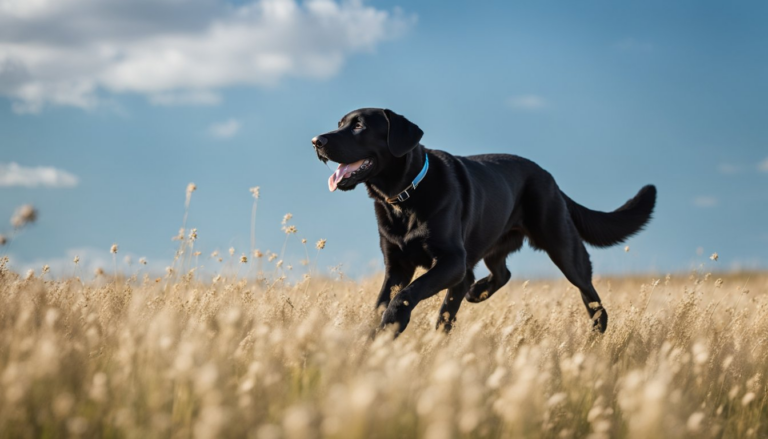Best Living/Home Environment for Labs: Factors to Consider
The living/home environment is an essential factor when it comes to providing the best care for labs. A well-designed living space can help to ensure that labs are healthy, happy, and well-adjusted. However, not all living environments are created equal, and it is important to consider a range of factors when selecting the best environment for your lab.
One of the most important considerations when selecting a living/home environment for labs is the physical space requirements. Labs need enough space to move around and play, as well as plenty of fresh air and natural light.
Labs need access to safe outdoor spaces where they can exercise and explore.
When selecting a living environment, it is great to consider the size of the space, the quality of the ventilation and lighting, and the availability of outdoor areas.
Key Takeaways
- A well-designed living space is suggested for the health and happiness of labs.
- Physical space requirements, exercise and activity needs, health and wellness, training and behavior, social and emotional needs, environmental enrichment, and safety considerations are all important factors to consider when selecting a living/home environment for labs.
- When selecting a living environment, it is important to consider the size of the space, the quality of the ventilation and lighting, and the availability of outdoor areas.
Physical Space Requirements
When it comes to creating a living or home environment for labs, there are several physical space requirements to consider. These requirements include the size of the home, secure fencing or containment areas, and safe spaces inside the home, free from hazards.
| Requirement | Description | Recommendation |
| Home Size | Larger homes or yards | Necessary for active labs |
| Fencing/Containment | Secure areas | Prevent labs from escaping |
| Indoor Safety | Hazard-free spaces | Remove toxic plants, chemicals |
The Size of the Home (E.g., Apartment Vs. House with a Yard)
One of the first things to consider when creating a living or home environment for labs is the size of the home. Depending on the size of the lab, a larger home or a home with a yard may be necessary.
For example, a lab that requires a lot of exercise may need a larger home or yard to run around in. On the other hand, a smaller lab may be perfectly happy in an apartment or smaller home.
The Importance of Secure Fencing or Containment Areas
Another important consideration is the need for secure fencing or containment areas. Labs are known for their energy and curiosity, which means they may try to escape from the home or yard. To prevent this, it’s important to have secure fencing or containment areas that can keep the lab safe and contained.
Safe Spaces Inside the Home, Free from Hazards
Finally, it’s important to create safe spaces inside the home that are free from hazards. Labs are curious and may try to explore their environment, which means they may get into things that are dangerous for them.
To prevent this, it’s important to create safe spaces inside the home that are free from hazards such as toxic plants, chemicals, and sharp objects.
When creating a living or home environment for labs, it’s important to consider the size of the home, the need for secure fencing or containment areas, and the creation of safe spaces inside the home. By taking these physical space requirements into consideration, labs can live in a safe and comfortable environment that meets their needs.
Exercise and Activity Needs
Labs are an active breed and require plenty of exercise and mental stimulation to maintain their health, energy, and quality of life. In this section, we will discuss the daily exercise requirements and suggestions, the importance of mental stimulation, and suitable places for labs to expend their energy.
Daily Exercise Requirements and Suggestions (E.g., Walks, Playtime)
Labs require at least one hour of exercise daily to maintain their physical and mental health. Daily walks, playtime, and other forms of physical activity are needed for their well-being.
Labs enjoy activities such as fetching, swimming, and running, and these activities can be incorporated into their daily exercise routine.
It is essential to ensure that labs get enough exercise, as a lack of physical activity can lead to obesity, joint problems, and other health issues. Owners should aim to provide their labs with regular exercise that is both fun and challenging.
Importance of Mental Stimulation (Toys, Training Games, Etc.)
Mental stimulation is just as important as physical activity for labs. Labs are intelligent and require mental stimulation to stay focused and engaged. Toys, training games, and puzzles are excellent ways to provide mental stimulation for labs.
These activities help to keep their minds sharp and focused, and they also help to prevent boredom and destructive behavior.
Training games such as fetch, hide and seek, and obedience training are great ways to provide mental stimulation for labs. These activities also help to build a bond between the owner and the dog.
Suitable Places for Labs to Expend Energy (E.g., Dog Parks, Hiking Trails)
Labs enjoy a variety of activities, and suitable places for them to expend their energy include dog parks, hiking trails, and other outdoor spaces. These places provide ample opportunities for labs to run, play, and socialize with other dogs.
Dog parks are excellent places for labs to socialize with other dogs and to expend their energy. Hiking trails provide opportunities for labs to explore new environments and to expend their energy while enjoying the great outdoors.
Health and Wellness
Common Breed-Specific Health Issues (E.g., Hip Dysplasia, Elbow Dysplasia)
Labs are generally healthy dogs, but they can be prone to certain health issues. A study comparing Labrador Retrievers and German Shepherd dogs living in the same environment found breed-specific differences in their immune system responses. Some of the most common breed-specific health issues that Labs face are hip dysplasia and elbow dysplasia.
Hip dysplasia is a genetic condition that affects the hip joint, causing pain and discomfort in the dog. Elbow dysplasia, on the other hand, is a condition that affects the elbow joint, causing lameness and pain in the affected leg.
Importance of Regular Vet Check-Ups and Vaccinations
Regular vet check-ups and vaccinations are essential for maintaining the health and wellness of your Lab. Regular check-ups can help detect any health issues early on, while vaccinations can prevent your dog from contracting serious illnesses.
It is recommended that Labs receive annual check-ups and vaccinations, but your vet may recommend more frequent visits depending on your dog’s health needs.
Signs of a Healthy Lab Vs. When to Seek Veterinary Care
It’s important to know the signs of a healthy Lab so that you can recognize when something is wrong. A healthy Lab should have a shiny coat, clear eyes, and healthy teeth and gums. They should also be alert, active, and have a good appetite.
If you notice any changes in your Lab’s behavior or appearance, it’s important to seek veterinary care right away. Signs that your Lab may need veterinary care include lethargy, loss of appetite, vomiting, diarrhea, and difficulty breathing.
Innovation and quality of life are important factors to consider when it comes to the health and wellness of Labs. Advances in veterinary medicine and technology have made it possible for vets to diagnose and treat health issues more effectively, improving the quality of life for Labs and their owners.
Case studies have shown that education is also important when it comes to maintaining the health and wellness of Labs. Owners who are knowledgeable about their dog’s health needs are better equipped to provide the care their dog needs to stay healthy.
Overall, maintaining the health and wellness of your Lab is essential for their happiness and longevity. By staying up-to-date on vet check-ups and vaccinations, and being aware of the signs of a healthy Lab, you can help ensure that your furry friend stays healthy and happy for years to come.
Training and Behavior
Basic Obedience and Training Needs
A lab’s living/home environment is best when it includes basic obedience and training. This encompasses housebreaking, crate training, and teaching fundamental commands such as sit, stay, and come.
Labs are intelligent and eager to please, making them responsive to positive reinforcement training methods. Discover more on Are Labrador Retrievers easy to train?. Consistency is key, so it’s recommended to establish a routine and adhere to it.
Addressing Common Behavioral Challenges (E.g., Chewing, Jumping)
Labs are known for their energetic and playful personalities, which can sometimes lead to unwanted behaviors such as chewing and jumping. It is important to address these behaviors early on to prevent them from becoming habits.
Providing plenty of exercise and mental stimulation can help reduce these behaviors. Additionally, providing appropriate chew toys and teaching the “off” command can also be effective.
The Importance of Early Socialization
Early socialization is recommended for labs to develop into well-adjusted and confident adults. This includes exposing them to a variety of people, animals, and environments during their critical socialization period between 3 and 14 weeks of age.
Socialization helps prevent fear and aggression towards new experiences. It is important to start socialization early and continue it throughout their lives.
Providing basic obedience and training, addressing common behavioral challenges, and early socialization are all important factors in creating the best living/home environment for labs.
By providing a consistent routine, positive reinforcement training, appropriate exercise and mental stimulation, and early socialization, labs can develop into well-adjusted and confident adults. Education and communication between the owner and the dog are key to achieving these goals.
Social and Emotional Needs
Labs are highly social animals and require human interaction and attention to thrive. Here are some factors to consider when creating a living environment for your lab.
Labs’ Social Nature and Their Need for Human Interaction
Labs are known for their friendly and outgoing personalities. They thrive on human interaction and need plenty of attention and physical contact.
Labs if left alone for long periods can become bored and destructive. It is recommended to spend at least an hour a day interacting with your lab, whether it be through playtime, training, or just cuddling.
Compatibility with Other Pets
Labs generally get along well with other pets, but it is suggested to consider their individual personalities and temperaments. Introduce new pets slowly and under close supervision to ensure they get along well. If your lab shows signs of aggression towards other pets, it is best to separate them for everyone’s safety.
Signs of Stress or Anxiety and How to Address Them
Stress and anxiety can have negative effects on a lab’s health and behavior. Signs of stress or anxiety include excessive barking, destructive chewing, and decreased appetite. To address these issues, ensure your lab is getting enough exercise, mental stimulation, and attention. Consider using calming aids such as pheromone diffusers or supplements if needed.
Environmental Enrichment
Creating an enriched environment for laboratory animals is needed to their well-being and can have a positive impact on their health and behavior.
Environmental enrichment refers to the provision of stimuli that increase the complexity of the animal’s environment and promote natural behaviors. In a laboratory setting, environmental enrichment can be challenging due to the need to balance animal welfare with research goals.
Safe Water Access (Given Labs’ Natural Affinity for Water)
Water is an essential resource for all living things, including laboratory animals. Providing access to clean, safe water is essential for maintaining the health and well-being of animals.
The Environmental Protection Agency (EPA) has established guidelines for water quality that should be followed to ensure that laboratory animals have access to safe drinking water.
Innovative methods for providing water to laboratory animals have been developed to promote natural behaviors and increase environmental complexity. For example, water bottles with sipper tubes or water dispensers that mimic natural sources of water can be used to encourage drinking behavior.
Recommendations for Safe Chew Toys, Bedding, and Other Accessories
Chew toys, bedding, and other accessories can be used to provide environmental enrichment for laboratory animals. However, it is important to ensure that these items are safe for the animals and do not interfere with research goals.
Innovative materials and designs have been developed to provide safe and effective environmental enrichment. For example, chew toys made from non-toxic materials and designed to promote natural chewing behavior can be used to provide enrichment for rodents. Similarly, bedding materials that mimic natural environments can be used to promote natural behaviors and increase environmental complexity.
Education and training are essential for ensuring that laboratory animal caretakers are aware of the latest recommendations for environmental enrichment and are able to provide safe and effective enrichment for the animals in their care. Updated guidelines and best practices should be followed to promote animal welfare while achieving research goals.
Overall, environmental enrichment is an important aspect of laboratory animal care that can have a positive impact on animal health and behavior.
By providing safe and effective enrichment, laboratory animal caretakers can promote natural behaviors and increase environmental complexity, while still achieving research goals.
Safety Considerations
Ensuring safety is an important aspect of creating a living/home environment for labs. This section will cover two sub-sections on identifying and eliminating common household hazards and water safety.
Identifying and Eliminating Common Household Hazards (E.g., Toxic Plants, Foods, Chemicals)
Identifying and eliminating common household hazards is an essential step in creating a safe living/home environment for labs. Toxic plants, foods, and chemicals are some of the most common hazards that can cause harm to labs. The Environmental Protection Agency (EPA) recommends identifying and removing these hazards to keep labs safe.
Toxic plants such as lilies, azaleas, and daffodils can cause liver damage or even death in labs. Foods such as chocolate, grapes, and onions can also be toxic to labs. Chemicals such as pesticides, cleaning products, and antifreeze can be harmful to labs if ingested.
To eliminate these hazards, labs should be kept away from toxic plants, and foods that are toxic to labs should be stored in a safe place. Chemicals should be stored in a locked cabinet or kept out of reach of labs. Additionally, labs should be trained to avoid eating or drinking anything that is not specifically provided for them.
Water Safety, Especially If There’s a Pool or Nearby Water Body
Water safety is another important consideration for labs living in a home environment. Labs are often strong swimmers, but they can still be at risk of drowning. The EPA recommends taking steps to ensure water safety in and around the home, especially if there is a pool or nearby water body.
To ensure water safety, it is essential to keep pools and hot tubs covered when not in use. Additionally, pools and hot tubs should be fenced off to prevent labs from accidentally falling in. If there is a nearby water body such as a lake or river, labs should be kept on a leash or under close supervision.
Creating a safe living/home environment for labs requires identifying and eliminating common household hazards and ensuring water safety. Labs should be kept away from toxic plants, and foods that are toxic to labs should be stored in a safe place. Chemicals should be stored in a locked cabinet or kept out of reach of labs.
Additionally, pools and hot tubs should be covered and fenced off, and labs should be kept on a leash or under close supervision near water bodies.
Emphasize the Importance of Creating a Loving, Attentive, and Safe Environment for the Well-Being and Happiness of the Labrador Retriever
Creating a loving, attentive, and safe environment for your Labrador Retriever is recommended for their well-being and happiness. Labrador Retrievers are social animals and thrive on human interaction and attention. They also require plenty of exercise and playtime to keep them healthy and happy.
In addition to providing a comfortable living space and regular exercise, it is important to establish a strong bond with your Labrador through positive reinforcement training and communication. This will help them feel secure and loved, and will also help prevent behavioral issues.
Overall, providing a loving, attentive, and safe environment for your Labrador Retriever is essential for their quality of life. By following these guidelines and taking the time to understand your Labrador’s needs, you can help ensure that they live a happy and healthy life.
Frequently Asked Questions
What is the ideal temperature for a Labrador’s living space?
The ideal temperature for a Labrador’s living space is between 65 and 75 degrees Fahrenheit. This temperature range is comfortable for Labs and helps them regulate their body temperature.
What are the best bedding options for Labs?
The best bedding options for Labs are those that provide comfort, support, and insulation. Some popular options include orthopedic foam beds, raised cots, and soft blankets. It’s important to choose bedding that is easy to clean and maintain.
What type of flooring is best for Labs?
The best type of flooring for Labs is one that is durable, slip-resistant, and easy to clean. Some good options include tile, vinyl, and hardwood. Avoid using carpet or rugs, as they can trap dirt, hair, and odors.
How much exercise do Labs need in their living environment?
Labs are active dogs that require daily exercise to stay healthy and happy. They should have access to a yard or outdoor space where they can run and play. In addition to outdoor exercise, Labs should also have opportunities for indoor play and mental stimulation.
What are some essential features for a Lab’s living space?
Some essential features for a Lab’s living space include plenty of room to move around, access to water and food, comfortable bedding, and toys for play and mental stimulation. It’s also important to provide a safe and secure environment, free from hazards and potential dangers.
What are some common mistakes to avoid when creating a living environment for a Lab?
Some common mistakes to avoid when creating a living environment for a Lab include using unsafe or toxic materials, providing inadequate exercise or mental stimulation, and not
Conclusion/Summary
The best living/home environment for Labrador Retrievers is one that provides them with plenty of love, attention, and safety. This includes providing them with a comfortable and secure living space, plenty of exercise and playtime, and access to nutritious food and clean water.
It is also important to create a routine that includes regular feeding times, exercise, and playtime to help keep your Labrador happy and healthy. Additionally, following a feeding guide, with regular veterinary care and grooming can help ensure that they stay healthy and comfortable.







